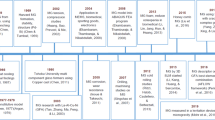Abstract
Energetic materials are solids that release a large amount of energy in combustion. The evaluation depends on both combustion heat and ignition temperature. Conventional non-metallic materials have low ignition temperature but small combustion heat, whereas metals have large combustion heat but high ignition temperatures. We show that many metallic glasses, combining the merits of both metals and non-metals, have large combustion heat, approximately twice that of the non-metals, and low ignition temperature that is several hundreds of Kelvin lower than that of the metals. The ease in igniting metallic glass results from the low thermal conductivity of the materials and the storage of energy in their liquid-like atomic structure. Metallic glass ribbons outweigh metallic nanoparticles due to their high production efficiency, low cost and nontoxicity. The findings suggest that metallic glasses are alternative energetic materials.
Similar content being viewed by others
References
A. K. Sikder, and N. Sikder, J. Hazard. Mater. 112, 1 (2004).
D. M. Badgujar, M. B. Talawar, S. N. Asthana, and P. P. Mahulikar, J. Hazard. Mater. 151, 289 (2008).
C. Zhang, C. Sun, B. Hu, C. Yu, and M. Lu, Science 355, 374 (2017).
H. Jia, Acta Armamentarii 2, 70 (1994).
M. A. Trunov, M. Schoenitz, and E. L. Dreizin, Propel. Explos. Pyrotech. 30, 36 (2005).
D. A. Yagodnikov, A. V. Ignatov, and E. I. Gusachenko, Combust. Explos. Shock Waves 53, 15 (2017).
R. A. Yetter, G. A. Risha, and S. F. Son, Proc. Combust. Institute 32, 1819 (2009).
T. Bachels, H. J. Güntherodt, and R. Schäfer, Phys. Rev. Lett. 85, 1250 (2000).
J. Sun, L. He, Y. C. Lo, T. Xu, H. Bi, L. Sun, Z. Zhang, S. X. Mao, and J. Li, Nat. Mater. 13, 1007 (2014).
Y. L. Shoshin, R. S. Mudryy, and E. L. Dreizin, Combust. Flame 128, 259 (2012).
M. Simkó, and M. O. Mattsson, Part Fibre Toxicol 7, 42 (2010).
J. Pan, Y. X. Wang, Q. Guo, D. Zhang, A. L. Greer, and Y. Li, Nat. Commun. 9, 560 (2018).
K. Mondal, U. K. Chatterjee, and B. S. Murty, J. Alloys Compd. 433, 162 (2007).
H. Wei, and C. S. Yoo, J. Mater. Res. 27, 2705 (2012).
B. Berger, CHIMIA 58, 363 (2004).
Z. Long, H. Wei, Y. Ding, P. Zhang, G. Xie, and A. Inoue, J. Alloys Compd. 475, 207 (2009).
Z. Zhou, X. Hu, Z. You, Z. Wang, J. Zhou, and K. Cen, ThermoChim. Acta 553, 54 (2013).
J. J. Lewandowski, and A. L. Greer, Nat. Mater. 5, 15 (2006).
J. H. Awbery, and E. Griffiths, Proc. Phys. Soc. 38, 378 (1926).
L. Vitos, A. V. Ruban, H. L. Skriver, and J. Kollár, Surf. Sci. 411, 186 (1998).
Author information
Authors and Affiliations
Corresponding authors
Electronic supplementary material
Rights and permissions
About this article
Cite this article
Yu, B., Sun, Y., Bai, H. et al. Highly energetic and flammable metallic glasses. Sci. China Phys. Mech. Astron. 63, 276112 (2020). https://doi.org/10.1007/s11433-019-1527-0
Received:
Accepted:
Published:
DOI: https://doi.org/10.1007/s11433-019-1527-0




